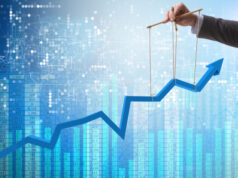Most people agree that COVID-19 has altered how the world works. This is probably why many consumers have modified their behavior towards both their purchase decisions and work and living arrangements. The “new normal” is already happening around the world.
Companies and workers have embraced virtual offices, students are using adjacent digital learning tools, and shoppers are more active in online e-commerce platforms. As a business owner, you need to keep up with these changes in behavior – even those that aren’t directly related to your business, products or services.
These changes affect how businesses fare in the market, whether directly or indirectly, for the long term. To help you stay abreast of these updates, here are the top four long-term consumer behavior trends brought on by COVID-19:
Focus on sustainability

During the lockdown, inadequate food supply became one of the primary concerns around the world. With roads blocked and entire communities isolated, images of empty grocery shelves, panic buying, and super-long lines at food banks reminded people of how important and imbalanced the food system is.
Because of this, people saw the dark side of the world’s highly centralized food supply. Some places get mountains of wasted food because of closed restaurants and bars, while others fail to harvest their produce on time because workers are either in quarantine or ill.
Because of this, different branches of the United Nations recommended an economic reset that comes with four broad adjustments in the food system:
- More resilient supply chains
- Regenerative farming
- Conservation
- Healthier diets
An Accenture survey also revealed that consumers are becoming more mindful of their purchasing decisions. More and more people are currently striving to reduce food waste by shopping more consciously and opting for sustainable options as much as possible.
Because of this, analysts and business experts recommend companies catering to these customers incorporate sustainability as a core part of their business plan.
Essential purchases are the top priority
COVID-19 became a significant eye-opener for what’s more important in people’s lives, which paved the way for people to prioritize needs first before their wants. According to Xpand Retail’s 2024 Post-COVID Customer Report, most people began shopping for essentials when malls and retail outlets resumed regular operations.
Similarly, a PricewaterhouseCoopers (PWC) report broke down the purchase priorities people had (and continue to have) after the easing of lockdowns. In a survey of over 1,600 respondents, the report noted the following distribution of essential purchases:
- Non-perishable goods – 27 percent
- Cleaning and household supplies – 25 percent
- Frozen food – 25 percent
- Perishable goods – 12 percent
- Pet supplies – 11 percent
- Pharmacy and personal care – 11 percent
- Non-alcoholic drinks – 8 percent
- Baby products – 7 percent
- Tobacco and alcoholic beverages – 6 percent
Choosing to cook or ordering takeout over dining out

People are now more conscious about how they take their food. With lockdowns in place, there wasn’t much choice during the pandemic: They had to cook their own food.
Interestingly, these habits lived on even after the pandemic. In fact, surveys show that more than half of consumers admit they cook, bake, and consume their foods and beverages more frequently than before COVID-19.
Moving forward, approximately 25 percent believe that these habits will continue even after the pandemic ends. Moreover, 79 percent expect to go to restaurants and bars less frequently (or not at all), and 43 percent are more likely to go with food delivery or takeout.
Heightened need for work-from-home setups
With food, groceries, education, and even medical consultations already moving to the virtual world, the remote work industry has become an even bigger world. Because of travel restrictions, companies have been forced to adapt and bring as much of their operational tasks online – from documentation and meetings to customer service and delivery.
What’s most interesting about this is that people actually like the change. Before COVID-19, there was already a growing number of workers who wanted to join companies that offer (or are more open to the idea of) a remote work setup. Now, the firms themselves are initiating it.
Based on a Forbes article, the work-from-home arrangement has already been developed as the ideal setup for most industries; something that the pandemic simply sped up.
Take Ford, for example. In 2024, the automobile giant announced its “hybrid work arrangement,” where its 30,000 employees could start working from home if they want to.
What Hasn’t Changed After COVID-19

Despite the numerous adjustments and lifestyle overhauls the new normal has brought about, there are certain things that just don’t change.
When it comes to consumer behavior, you can expect that:
People still want to touch the things they buy. A Forbes contributor argues that it’s “like COVID-19 never happened.” And for a part, he has a point, especially after highlighting the impeccable timing of the opening of Amazon’s physical stores. Xpand Retail’s consumer report also found proof of this.
According to the market report, more than 60 percent of the customers still prefer to shop in brick-and-mortar stores. One significant reason for this was that online retailers were unable to keep up with consumer demands.
Other surveys also indicate that humans behave almost the same, especially when it comes to assessing products before purchasing. People not only want to see what they’re buying; they prefer the complete sensory experience.
Businesses must continue to focus on consumer behavior
Although there are several adjustments to how businesses are run these days, one thing remains constant: the need for analytics to stay on top of consumer behavior. While many things have changed from the consumer perspective, the new normal just looks like the “old” normal for most consumer-facing firms.
In fact, experts strongly advise business owners to avoid big-picture distractions and stay focused on data about what customers think, plan, and do with their money.
Guide Your Business Through the “New Normal” with Data

Consumer behavior plays a significant role in business success, as it dictates how retailers and other companies should manage their operations. With the pandemic changing so many things forever, you can remain certain that data and analytics will keep steering you to the right path.









